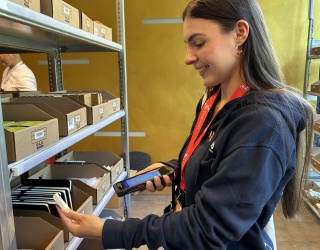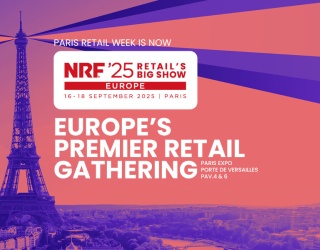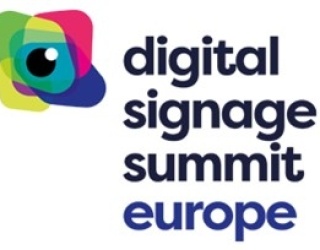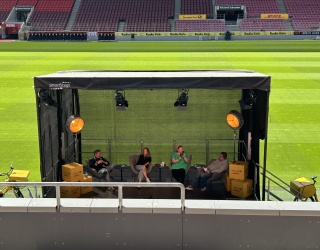
By reaching the customer on his won mobile device, a retailer can be close to his customer and give him an extended shopping experience. But there are also mobile in store solutions, enabling such diverse usages as receiving and stock counting, label printing and queue busting. In our interview, Paulo Magalhães, CEO of software developer Tlantic, and José Fortunato, COO of the Portugese retail company Sonae, talk abot the benefits of mobile applications for retailers and customers as well.
Mr. Magalhães, Tlantic offers retailers a mobile App that boosts execution of internal processes and increases efficiency and motivation thereby reaching a higher customer satisfaction. Can you explain how it works?
Paulo Magalhães: More than a mobile App Tlantic offers a range of solutions that are tailor made for the retailer’s specific pain points. More than 80% of our employees have a retail background, so we actually understand and quickly identify the retail pains.
Mobile solutions play an important role in increasing the motivation and productivity of employees. Take the example of our in store solution, an app to enable store operations using mobile devices, from receiving to stock counting, from label printing to queue busting, among others. Using this app the store employees can perform all their functions without leaving the shop floor. For example, stock counting can be performed on the spot, ensuring better stock accuracy and less stock outs.
Another example is the price changing process using mobile printers to print new labels: instead of printing in the back office all the new labels and then trying to found out the product location on the shelves in order to change labels, employees can simply scan each shelf label and, if there is a new price, the application will automatically print a new label that can be immediately posted on the shelf. This functionality not only reduces drastically the effort and time dedicated to the process, but also increases price accuracy.
Another example is the assisted sales solution: your employees no longer need to walk back and forth, from the shop to the back office, because they have all the information they need on their tablet, in their hands. They are free to be
where it is most important: on the shop floor. Closer to the client. And they are free to have easy access to all the information to better serve their clients.
However, as business data migrates from servers, desktops and laptops to mobile devices, these systems need to be brought under the organization’s existing IT systems management strategy. For business continuity, security and compliance reasons, retail organizations need to extend the same robust IT and security policies to mobile devices.
Therefore, Tlantic Enterprise Mobile solution is a multi-device and multi-platform application (iOS, Android, Web mobile) and its open architecture can be easily connected to any back-end systems, allowing CRM & POS full integration. It is highly scalable and evolutionary with seamless integration with the existing IT framework and customer experience, allowing to harmonize the dialogue between business systems and the application, while respecting the most rigorous connectivity, security and performance challenges.
What role do mobile devices play in today’s retail environment? Can a retailer still be successful if he does not use mobile solutions?
Magalhães: The truth is that retail is undergoing a sweeping transformation and the challenge is how to become Mobile with seamless integration with the existing customer experience and IT framework. Customers are more and more demanding and there´s a fierce competition.
We invite the customer to make part of a truly Omni-channel world, allowing them to dialogue with several associated online services and making it easy and enjoyable for the customer to be close to the retailer brand, services and
products. At the end of the day, customer satisfaction is, always, what really counts. And it improves significantly, with visible results in the heightened loyalty and repeated sales. At least this is what our world-wide experience tells us.
What benefits does the use of mobile devices and solutions in retail have for the customers?
Magalhães: Several benefits. But the most important one is to actually be able to be close to your customer, and give him an extended shopping experience. A pleasant and helpful one, regardless of the channel he chooses to use. Where they can actually build their shopping lists on their way home and share it with their girlfriend/boyfriend. Where they don’t need to worry anymore about bringing physical coupons because they can use the digital ones anytime, anywhere.
Where they can always check on their loyalty card balance and have access to personalized discounts, considering their customer profile. People rarely forget their smartphones. So what we offer is actually a magical retailer-customer link.
Mr. Fortunato, do you as a retailer still need to use high-priced specialised mobile devices like scanners for the various in-store applications, or can he reach the same effects by using consumer devices like tablets and Smartphones. Is it only a question of the right software application?
José Fortunato: We believe that for some environments like a grocery store or a warehouse and for intensive usage, we still need to have professional rugged devices, with long battery life. However we understand that for client facing functions, like an assisted sale, and especially on fashion or consumer electronics stores there is a need to use more appealing consumer devices. A second generation of professional devices is coming, not so highly priced and with better looking, that are half way to consumer devices, and we are already using them.
Consumer devices can run all the functionalities a retailer needs. The secret lies in the ability to have the best software solution, the features that best serve the retailer interests, the type of usage and even the “wearability” of the device. Together with Tlantic we study all of these axes when we are defining a new app in order to choose the best solution
How do mobile devices help you and your employees with the daily work?
Fortunato: Through the implementation of Tlantic InStore solution, Sonae has substantially increased its productivity. The solution - used by more than 25,000 employees who perform about one million transactions daily, within a total of 15 operational activities - allows an immediate response to multiple tasks without having to leave the workplace, and especially without having to get away from the customer, on the shop floor.
Having information available where and when needed allowed us to improve and enhance the performance of employees through a technology that ensures a 360-degree view of the business. This centralization of information was as a strong turning point for business success. The implementation of the InStore solution raised the operations to a new level. The information is available where and when needed so employees can use their time efficiently. This is undoubtedly a tool that has improved 100 percent the daily work of the entire structure.
How can mobile devices help to create a better link between the different sales channels?
Fortunato: Mobile devices are taking the retail industry by storm. Retailers are increasingly embracing mobile services and applications to better engage with customers on the showroom floor and improve the customer experience. Powerful new mobile devices from smartphones to tablets enable these new marketing and sales channels. The comprehensive variety of different channels and touch points demands high interoperability allowing customers to visualize an item at the online shop, buy it through its smartphone and, if it does not correspond to expectations, to be able to return it at a physical store.
On the other hand, by being already widely used, mobile devices centre the attention to the customer into the software, vanishing the retailer’s issues with equipment, compatibility, costs, and many other items that were deviating its attention from customers.
Interview: Daniel Stöter, iXtenso.com









